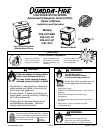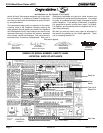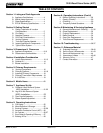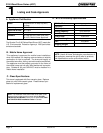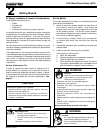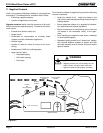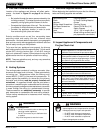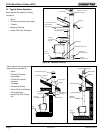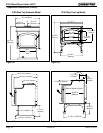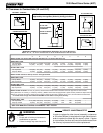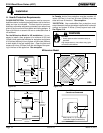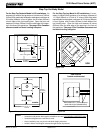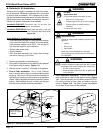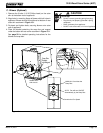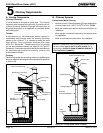
Page 6
7033-277C
March 2, 2007
R
3100 Wood Stove Series (ACC)
Recommended
Location
Marginal
Location
Location
Not
Recommended
Recommended
Location
Location NOT
Recommended
Multi-level Roofs
Windward
Leeward
Outside Termination Cap
Figure 6.1
C. Negative Pressure
Draft is the pressure difference needed to vent appliances
successfully. Considerations for successful draft include:
• Preventing negative pressure
• Location of appliance and chimney
Negative pressure results from the imbalance of air avail-
able for the stove to operate properly. Causes for this imbal-
ance include:
• Exhaust fans (kitchen, bath) etc.)
• Range hoods
• Combustion air requirements for furnaces, water
heaters and other combustion appliances
• Clothes dryers
• Location of return-air vents to furnace or air condi-
tioning
• Imbalances of HVAC air handling system
• Upper level air leaks
• Recessed lighting
• Attic hatch opening
• Duct leaks
To minimize the affects of negative air pressure the following
must be considered:
• Install the outside air kit. Install the intake on the
side of the house towards prevailing winds during the
heating season.
• Ensure adequate outdoor air is supplied for combus-
tion appliances and exhaust equipment.
• Ensure furnace and air conditioning return vents are
not located in the immediate vicinity of the appli-
ance,
• Avoid installing the appliance near doors, walkways
or small isolated spaces.
• Recessed lighting should be of “sealed can” design;
attic hatches weather stripped or sealed; and attic
mounted duckwork and air handler joints and seams
taped or sealed.
WARNING
• Negative pressure can cause spillage of com-
bustion fumes, soot and carbon monoxide.
• Appliance needs to draft properly for safety.
Asphyxiation Risk.



